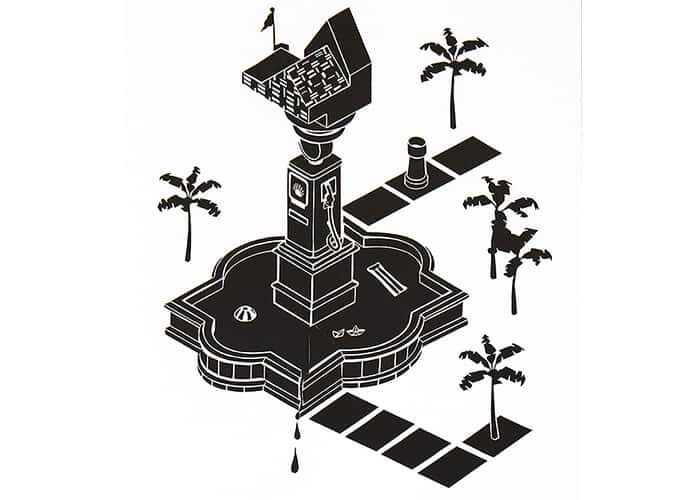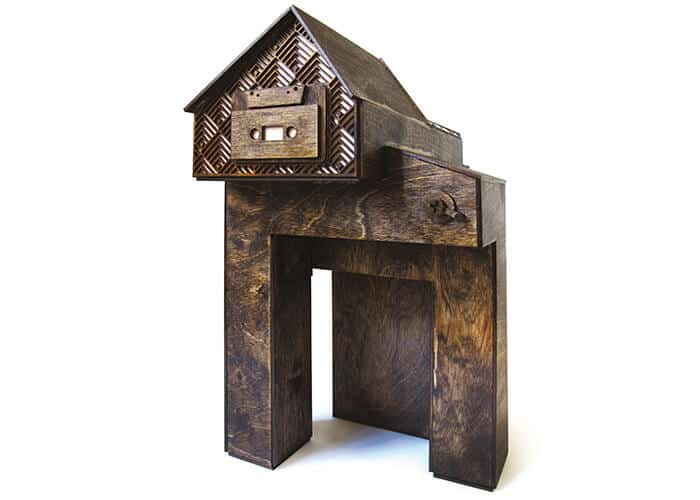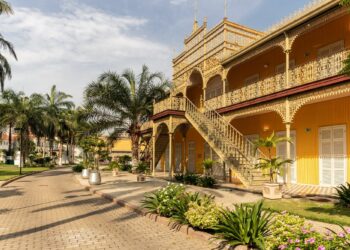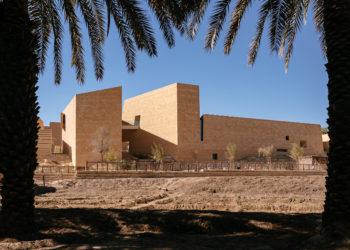Presented by 50 Golborne Gallery, Olalekan Jeyifous spoke to ART AFRICA about the body of work on show at 1:54 Contemporary African Art Fair, London next week.
 Olalekan Jeyifous, Dispatches From/To, 2016. Wood, wood stain, 36.8 x 30.4 x 22.8 cm. Images courtesy of the artist and 50 Golborne Gallery
Olalekan Jeyifous, Dispatches From/To, 2016. Wood, wood stain, 36.8 x 30.4 x 22.8 cm. Images courtesy of the artist and 50 Golborne Gallery
ART AFRICA: You were trained in Architecture at Cornell University, where you experimented with “the application of various computer software in the creation of art, design and architecture.” What attracts you to the built environment, and the digital in particular?
Olalekan Jeyifous: As a Nigerian-born, U.S. citizen, my formative years were marked by constantly moving and perpetually adapting to new places. As a result, I have always had a fascination with examining either the anxiety or potential of these spaces, and how one navigates, maps, and perceives them. Combining this with my early love of drawing, and architecture – or more broadly spatial design – seemed like a logical career trajectory.
I was fortunate to have a solid foundation in analog practices such as collage-making, sketching, and technical drafting, and I use this marriage of traditional normatives of representation to an exacting digital practice in order to quickly explore spatial conditions and establish unique visual languages.
You’ve worked in a wide variety of mediums, from pencil drawings to digital renderings and sculpture. What is your relationship to material, and particular to surfaces?
I am interested in the visual representation of social, political, mythical, and cultural narratives. My relationship to the material is dependent on deploying the medium that will most effectively support these narratives and vice versa. However, this often changes and I revisit projects over and over in a variety of mediums and aesthetic iterations.
In much of your work the interest in ‘construct’ seems to extend beyond the literal, drawing on futuristic, scifi-elements which you refer to as “imagined and speculative.” Where do you place these constructions in relation to contemporary society?
My artwork is strongly rooted in “borrowed and invented narratives.” More often than not these narratives explore comprehensive constructions of urban Utopias or Dystopias that deal with the interstices of architecture, emerging technologies, and culture; anchoring them with a direct relevance to contemporary social issues in ways that communicate their participation in, and alienation from the larger world.
To put it more succinctly, I feel that “speculative” works are inherently responses to contemporary conditions projected into the near or far-flung future. These responses can be aspirational, despondent, or a combination thereof, which seeks to address the complexity and multiplicity of our present day condition.
 Olalekan Jeyifous, Luxury Sector, 2016. Black cardstock on Watercolor Paper, 55.8 x 76.2 cm. Image courtesy of the artist and 50 Golborne Gallery.
Olalekan Jeyifous, Luxury Sector, 2016. Black cardstock on Watercolor Paper, 55.8 x 76.2 cm. Image courtesy of the artist and 50 Golborne Gallery.
According to the press release for your upcoming show ‘Not My Business’ at 50 Golborne, you were born in Nigeria, but left when you were six and haven’t been back. There is quite a strong emphasis at the moment on artistic practice from Africa. Do you ever feel unwillingly obligated to speak about this history in your work?
Yes and no. I don’t feel unwillingly obligated to speak about this history in my work but I know that the work that I produce that does not speak explicitly to this history (and I have plenty of it) will never generate as much interest as the work that does. I feel that this is irrespective of whether that work is “better” or not.
Please tell us about the body of work on show at 50 Golborne’s stand during 1:54, London 2016?
I am presenting hand-cut black and white collages on watercolour paper, wooden models, and a textile banner. The inspiration for the work comes from my love of architectural follies refracted through quirky, ironic musings on the political economy of Nigeria. These musings derive from my particular diasporic vantage point and rely on an accumulation of current news, vintage family photographs, imperfect memory, and the construction of my personal identity, in order to reflect on a country that I have not been back to in thirty years, but still consider home. So while there is much at play in the works it is my understanding that complex structures/phenomena are borne of tacit simplicity, and the same rules apply for the observer. Therefore, the formal minimalism and combined objectivist and surrealist aesthetic of the pieces speak to this idea.
Olalekan’s work will also be on show at AKAA, Paris between the 11th – 13th November 2016, where he will be one of the exhibiting artists during a special project which focuses on Contemporary African Architecture.
This interview was first published in the September 2016 edition of ART AFRICA magazine, entitled ‘BEYOND FAIR.’



